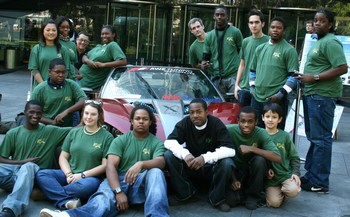We are getting within reach of the actual race. We have our ideas about the competition but really do not know who has what. Our picks for the good ones? TW4XP, from Germany, or our friend Stefano with the tilt vehicle from Italy (TTW Italia). England has two significant offerings - the guys from Delta and the Tata team, with Jaguar power and engineering and certainly a real budget. Switzerland (X-Tracer) will show up with precision, count on it.
In the US, we all know about Aptera in California, of course. Lets not forget North Carolina, home to loads of racing talent and Team EVI. In the rainy Pacific Northwest Western Washington University has a car with Paul Allen sponsorship on it (think SpaceShipOne), and in cold Minnesota there is Chris Taylor and his ULV-3 team.
We tend to dismiss those who have entries based on production cars, but hey, who really knows.
There will be surprises, no doubt. This is a race that may plant the seed that changes the future of an industry and our nation - not to mention that it is a race for ten million dollars, perhaps the largest prize in motorsports history.
Here is a bit from Delta Motorsports, who may, we think, be our biggest competition…

Our car's really beginning to take shape now. This is the monocoque, almost complete, up at KS Composites. Kelvin (left) and Jamie Smith have put in a sterling effort to get us to this point, for which we're hugely grateful.

You've probably noticed they've got the chassis (& some of the aluminium front structure) in the air, which isn't a problem because it only weighs 55kg!
It's taken us a long time to get to this point, partly because of the effort we've put into the design of the car and the manufacture of the moulds, but also because we've been developing a production methodology that will allow us to manufacture this type of carbon composite structure much more cost-effectively in the future. Working closely with KS on the manufacturing side and also with Advanced Composites (ACG) who are developing the pre-preg fabrics, we believe there are huge opportunities to reduce weight and therefore energy consumption.
A great example of the sort of thing we (and our partners) can achieve by applying our motorsport philosophy into new arenas...
Visit the Progressive Automotive X Prize site for information on all the teams.


 Thursday, February 18, 2010 at 03:29PM
Thursday, February 18, 2010 at 03:29PM

